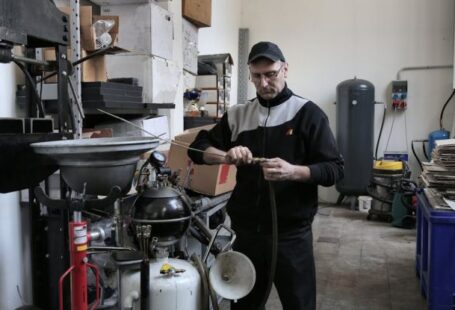Waste-to-energy technologies have emerged as a promising solution to address the dual challenges of waste management and energy production. By converting waste materials into electricity, heat, or fuel, these technologies offer a way to reduce the environmental impact of waste disposal while also generating renewable energy. But can waste-to-energy technologies truly provide a sustainable power source for the future?
The Potential of Waste-to-energy Technologies
Waste-to-energy technologies encompass a variety of processes that convert waste materials into energy. These processes can include incineration, gasification, pyrolysis, and anaerobic digestion, among others. Each method has its unique advantages and challenges, but they all share the common goal of extracting energy from waste that would otherwise be landfilled or left to decompose.
One of the key benefits of waste-to-energy technologies is their ability to reduce the volume of waste that ends up in landfills. By diverting organic waste materials such as food scraps, agricultural residues, and sewage sludge from landfills, these technologies help to mitigate the production of harmful greenhouse gases like methane, which are released during the decomposition of organic waste. This not only helps to reduce the environmental impact of waste disposal but also contributes to efforts to combat climate change.
Moreover, waste-to-energy technologies provide a reliable source of renewable energy that can supplement traditional fossil fuel-based power generation. By harnessing the energy content of waste materials, these technologies can help to diversify the energy mix and reduce reliance on finite fossil fuel resources. This can enhance energy security and resilience while also supporting the transition to a more sustainable and low-carbon energy system.
Challenges and Considerations
While waste-to-energy technologies offer significant potential benefits, they also face several challenges that must be addressed to ensure their sustainability and viability as a power source. One of the main concerns associated with these technologies is the potential for air pollution and emissions of harmful pollutants during the combustion or gasification of waste materials. To mitigate these impacts, strict emissions controls and monitoring systems must be implemented to ensure that air quality standards are met and maintained.
Another consideration is the issue of waste feedstock availability and composition. The efficiency and effectiveness of waste-to-energy processes can be influenced by the type and quality of the waste materials being used as feedstock. Ensuring a consistent and reliable supply of suitable waste materials is essential to the successful operation of waste-to-energy facilities. Additionally, careful consideration must be given to the management of residues and byproducts generated during the energy conversion process to minimize environmental impacts and ensure proper disposal or treatment.
The Economics of Waste-to-energy
The economic viability of waste-to-energy technologies is another important factor to consider when evaluating their potential as a sustainable power source. The costs associated with developing, constructing, and operating waste-to-energy facilities can be significant, and the financial sustainability of these projects depends on a variety of factors, including waste tipping fees, energy prices, government incentives, and regulatory frameworks.
Despite these challenges, waste-to-energy technologies have the potential to play a significant role in the transition to a more sustainable and circular economy. By converting waste materials into valuable energy resources, these technologies offer a way to reduce waste generation, lower greenhouse gas emissions, and promote resource efficiency. With continued innovation and investment, waste-to-energy technologies can help to create a more sustainable and resilient energy system for the future.
In conclusion,
Waste-to-energy technologies have the potential to provide a sustainable power source by converting waste materials into renewable energy resources. Despite facing challenges related to air pollution, feedstock availability, and economic viability, these technologies offer a way to reduce waste generation, mitigate greenhouse gas emissions, and support the transition to a more sustainable energy system. With the right policies, investments, and technological advancements, waste-to-energy technologies can play a crucial role in the transition to a more circular and low-carbon economy.





